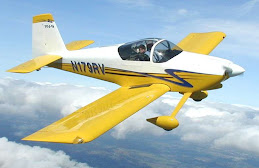Wednesday 20th August 2008 2hrs 50min
Deburred and dimpled remaining left wing main ribs. Dimpled both aft spars. Dimpled J stringers for both wings. Began to install tank attach platenuts on spars.
Still tired (it's the diet and the gym sessions you know), I wanted relatively undemanding work this evening - and there was lots of it. You have to have a certain tolerance for tedium in this game as well as the ability to pace the work over a long project in which the finishing line is so far in the future that it can barely be imagined. This evening was one of those evenings that tested these attributes. I didn't count them but there are a lot of holes in a set of wing main ribs and another bunch of them in the stringers and aft spars. In fact they would be fairly easy to count as there are 15 ribs and the stringers and aft spars involve 6 times the number of rivets across the entire length of the wing. I must do that count in some future idle moment.
The air squeezer is a blessing for this task as it is really fast and provides a consistent pressure on each stroke. You do have to make sure from time to time that the adjustable rivet set (don't even think of getting the non-adjustable kind that relies on shimming out the die with washers) is adjusted to the point where the two dies meet firmly when you close the squeezer with no material between them. I find that this loosens slightly during a long dimpling session and needs fairly constant checking (every 30 strokes or so).
One thing to watch out for is getting so embedded in a rythm that you follow that rythm regardless of whether the work is properly positioned for the stroke or not. This is when you add new holes to your ribs, stiffeners or, worse again, your skins. You need to retain enough concentration to ensure that the guide pin is firmly through the hole EVERY TIME before you pull that trigger.
The Orndorff videos show George using his hand squeezer for this job and it looks as if it would not be much slower than the air squeezer. He holds the saqueezer near vertically with the tip of one handle down on the bench and uses his right hand to move the other handle while his left hand moves the work through the jaws.
I love my DRDT2 dimpler but it is no use on any hole near a flange so it is restricted mainly to sheet material. I am certain that I would hate the usual red hammer-driven C-frame dimpler as much as other builders say they do. Smitty hates it so much that he will use a pop-rivet dimple die to dimple an entire wing skin. As he says, time is what he has most of.

 Towards the end of the evening I moved on to one of the last jobs on the spars, which is the riveting of three platenuts near the inboard end that take the tank attachment bolts through the inboard-most attach bracket. These are close to the reinforcement plate and for that reason, the top and bottom one are angled at 45 degrees. However, that does not leave a lot of space to get a bucking bar in between the plate and the barrel of the platenut. The other (forward) side of the spar gets countersunk as the rivets called out here are AD4263-4s and you need a flat surface against which to mount the tank attach brackets. Again the spar structure intereferes here and there is not enough space to get a countersink cage onto the top and bottom-most rivet holes. I used the deburring cutter in my electric screwdriver to countersink these holes, checking regularly with a rivet until I got the right depth.
Towards the end of the evening I moved on to one of the last jobs on the spars, which is the riveting of three platenuts near the inboard end that take the tank attachment bolts through the inboard-most attach bracket. These are close to the reinforcement plate and for that reason, the top and bottom one are angled at 45 degrees. However, that does not leave a lot of space to get a bucking bar in between the plate and the barrel of the platenut. The other (forward) side of the spar gets countersunk as the rivets called out here are AD4263-4s and you need a flat surface against which to mount the tank attach brackets. Again the spar structure intereferes here and there is not enough space to get a countersink cage onto the top and bottom-most rivet holes. I used the deburring cutter in my electric screwdriver to countersink these holes, checking regularly with a rivet until I got the right depth.Whether I am so out of practice in bucking rivets or whether the placing is so awkward, I messed up a few of these rivets and had to drill them out either because they were not properly seated in the countersink on the forward side or because of a faulty shop head. When the same problem started to occur on the second spar I decided to call it a night. It is very important to know when it is better to take a break or persist in the face of a problem.


No comments:
Post a Comment